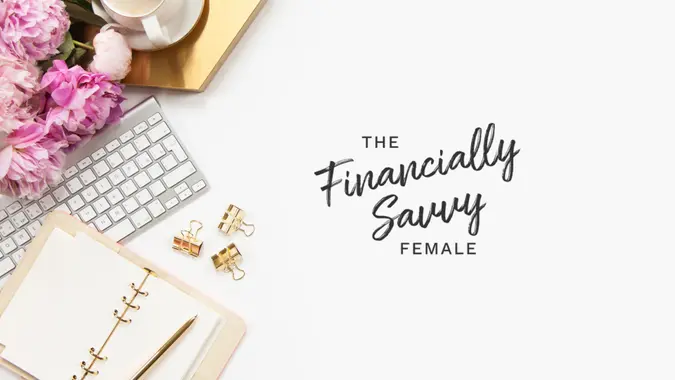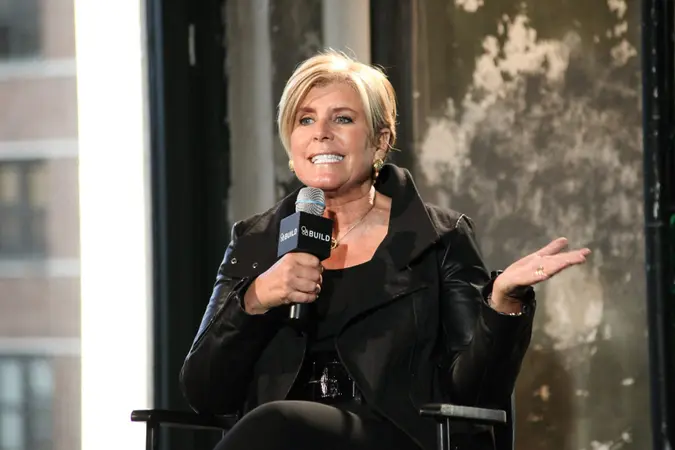I’m a Self-Made Millionaire: Do This 1 Thing To Stop Living Paycheck to Paycheck

Commitment to Our Readers
GOBankingRates' editorial team is committed to bringing you unbiased reviews and information. We use data-driven methodologies to evaluate financial products and services - our reviews and ratings are not influenced by advertisers. You can read more about our editorial guidelines and our products and services review methodology.

20 Years
Helping You Live Richer

Reviewed
by Experts

Trusted by
Millions of Readers
Over one-third of Americans (34%) currently live paycheck to paycheck, a recent GOBankingRates survey found. And, according to the same survey, 18% of Americans have nothing saved, making it that much harder to escape the paycheck-to-paycheck cycle. Luckily, one self-made millionaire may have just the solution you’re looking for.
“The fastest way out of the paycheck-to-paycheck trap is to create a cash flow cushion,” said Bernadette Joy, a financial coach and self-made millionaire. Here’s what that entails, why you need one and how to build it.
Why You Need a Cash Flow Cushion
Joy recommends building a “cash flow cushion” by keeping at least one month’s worth of expenses in your regular checking account.
“This way, you’re never anxiously waiting for your next paycheck to cover rent or groceries,” she told GOBankingRates. “It gives you breathing room, prevents overdraft fees and allows you to make financial decisions from a place of confidence instead of desperation.”
Some financial experts recommend having three to six months’ worth of essential expenses covered in a separate emergency fund. However, Joy suggests that maintaining this smaller cash cushion could be enough for you to break free from living month to month. Once you build this momentum, you can then start focusing on other financial goals like paying off debt or increasing your income.
How To Build Your Cushion
The first thing you need to do is calculate how much you need to save up to serve as your cash flow cushion. In her book, “Crush Your Money Goals,” Joy explains that this cushion should contain enough to cover your rent or mortgage, utilities, food, transportation and essential health expenses for one month. Once you know how much you need, take whatever steps are necessary to save that amount.
“This might involve reallocating some of your savings or adjusting your budget to prioritize building your cash flow cushion,” Joy wrote in her book.
Joy also said that it’s important to maintain this cushion once you’ve built it.
“Many checking accounts will allow you to set an alert when your balance reaches below a certain threshold,” she wrote. “If one month’s worth of expenses for you is $5,000, aim to always have at least $5,000 in your checking account and alert yourself it goes below that.”
Caitlyn Moorhead contributed to the reporting for this article.
Survey methodology: GOBankingRates surveyed 1,006 Americans ages 18 and older across the country between Dec. 6 and Dec. 9, 2024, asking 24 different questions: (1) What is your preferred method of banking?; (2) How optimistic are you that you will add more than $2,000 to your savings account balance over the next year?; (3) How much do you anticipate your savings account balance to change over the next year?; (4) How would you characterize your current level of stress when it comes to your current savings?; (5) How much is the minimum balance you keep in your checking account?; (6) How much do you currently have in your savings account?; (7) How much of your paycheck do you put in your checking account?; (8) How much of your paycheck do you put into your savings account?; (9) How satisfied are you with your current bank?; (10) What’s the worst part about your current banking situation?; (11) If you could change one thing about your current banking situation, what would it be?; (12) Which of the following bank accounts do you currently use/have open? (Select all that apply); (13) Which type of banking account do you trust the most to keep your money safe?; (14) Which type of banking account do you trust the LEAST to keep your money safe?; (15) Do you trust digital banks (neobanks, online-only banks) as much as traditional banks with physical branches?; (16) In the past year, how often have you written a physical check?; (17) When was the last time you chose to visit your bank in-person?; (18) Are you concerned about the rising number of physical bank branches that have shut down in the past few years?; (19) Have you had an overdraft on your checking account in the past year?; (20) How much cash do you keep at home?; (21) Do you believe the current banking system needs to change?; (22) Do you believe the current banking system benefits the rich more than the middle class or lower middle class?; (23) Do you believe the current U.S. banking system is unfair to Americans of lower economic status?; and (24) How have the results of the 2024 presidential election affected your financial outlook going into 2025 and beyond?. GOBankingRates used PureSpectrum’s survey platform to conduct the poll.
 Written by
Written by  Edited by
Edited by 

























